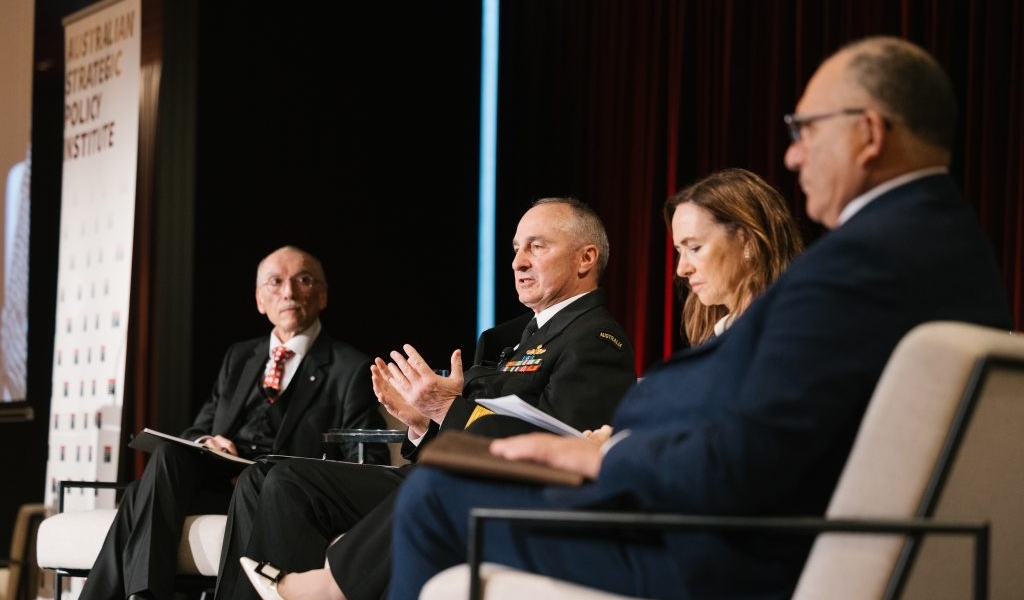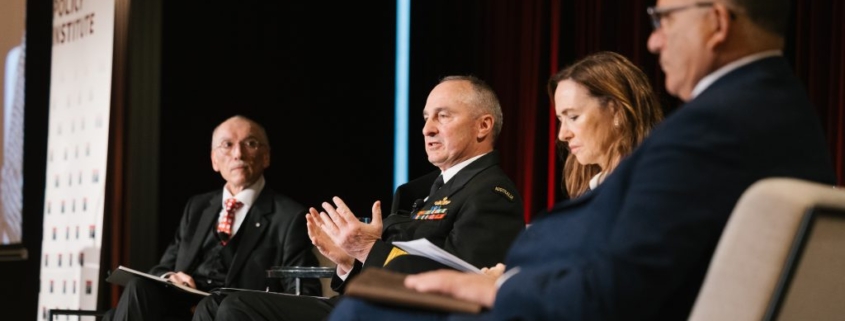ASPI Defence Conference: Putting the ‘national’ in national preparedness and resilience
The ASPI Defence Conference in June highlighted the critical importance of national preparedness and resilience to Australia’s national security.
Chief of the Defence Force, Admiral David Johnston, set the stage by emphasising a pivotal shift in Australia’s strategic landscape. Noting that Australia no longer benefits from a 10-year window of strategic warning, a security ‘comfort blanket’ the nation had previously relied upon, Johnston opined that Defence had to take ‘quite a fundamentally different approach in defence’.
This compressed warning period necessitates rapid adaptability, particularly given the accelerating pace of technological change. Johnston illustrated this with the example of uncrewed systems and counter-uncrewed system technology in Ukraine, where ‘the cycle is somewhere up to 12 weeks before tech investments become irrelevant because of counter strategy’. Such dynamics challenge traditional defence planning, which has often prioritised efficiency—such as just-in-time logistics and minimal warehousing—over resilience.
Johnston argued for a recalibrated approach where ‘effectiveness or resilience is the driving judgement’ rather than efficiency alone, acknowledging heightened interconnectedness and competitiveness. Moreover, he said that we need to rethink national preparedness as part of Australia’s deterrence strategy. This means considering Australia as the homeland from which combat operations would be launched, highlighting the strategic importance of infrastructure in northern Australia, supply chains, and Defence’s integration with industry and states and territories.
Chief executive of the Group of Eight universities, Vicki Thomson, brought a vital perspective from the academic sector, underscoring the role of education and research in national security and resilience. Reminding us that ‘education is the chief defence of a nation’, Thompson pointed out that the Group of Eight universities conducted ‘more than half of our defence-related research’. Highlighting a recent example of effective university mobilisation, Thomson recounted how Australian universities rapidly deployed resources during the Covid-19 vaccination effort and assembled interdisciplinary research teams. Thomson raised the ongoing challenge of maintaining preparedness and engagement outside of immediate emergencies, and the need to rebuild the trust in academic institutions that had eroded in recent years.
Deputy coordinator-general of the National Emergency Management Agency, Joe Buffone, emphasised that Australia is already engaged in a conflict—one with nature itself. He pointed to climate change driving more frequent and intense disasters, testing community and institutional resilience. Buffone argued that this presented an opportunity to build capabilities that can integrate seamlessly with Defence in higher-end contingencies.
Buffone highlighted Australia’s unique national coordination mechanism as a model for whole-of-society collaboration, where private sector, governments, and not-for-profits operate as equal partners in disaster response. He stressed the importance of engaging civil society, noting that normal societal activities had to continue during conflicts or crises. He also highlighted the power of community resilience, noting the crucial role of volunteers and spontaneous community action during crises. Admiral Johnston concurred, noting the importance of national resilience so that Defence is not the first responder to every crisis, a necessity given the potential for Defence forces to be engaged overseas during domestic emergencies.
All panellists converged on the critical role of communication and trust in building national resilience and preparedness. Admiral Johnston likened national security preparedness to bushfire survival planning—it should be about ‘understanding and confidence’ rather than fear. He emphasised the need for credible communicators to counter disinformation and maintain public trust. Thomson echoed this, cautioning against being ‘pulled to those very loud voices at the margins’. Buffone added that communication must include all segments of society, including vulnerable populations and those less able to access or interpret complex information.
National preparedness and resilience will require a coordinated whole-of-government and whole-of-nation approach that harnesses the strengths of all sectors of society, including Defence, academia, emergency management, industry, and civil society. As Admiral Johnston summarised, ‘it is why the national in “National Defence Strategy” is probably the most important word of the three in that title’. He went on to add that ‘the community that travels well is well-educated [and] has good access to credible information’. Just as Australia talks freely of homes needing a bushfire survival plan during the lead up to summer, national security has a similar communication requirement. Admiral Johnston highlighted that ‘we need credible communicators who are trusted by the community. We need to speak openly with the community. We need to counter disinformation because we should expect, particularly when we are talking about security, there will be additional layer of confusion or array of actors who will be seeking to undermine our message or to reconfigure it.’
The next cycle of strategy development and resource allocation—leading to the 2026 National Defence Strategy and Integrated Investment Program—offers the opportunity to bring national preparedness and resilience to the fore. As Admiral Johnston noted, ‘the opportunity we have with the biennial cycle now is to keep coming back and reviewing the strategy, looking at the opportunities or where the investments are required, putting the case to government to increase the defence expenditure where we believe it is needed to meet particular outcomes’. Through trust, communication, collaborative coordination, and investment in education and research, we can hope that the 2026 cycle can build the national preparedness and resilience needed to navigate an uncertain and strategically challenging future.





